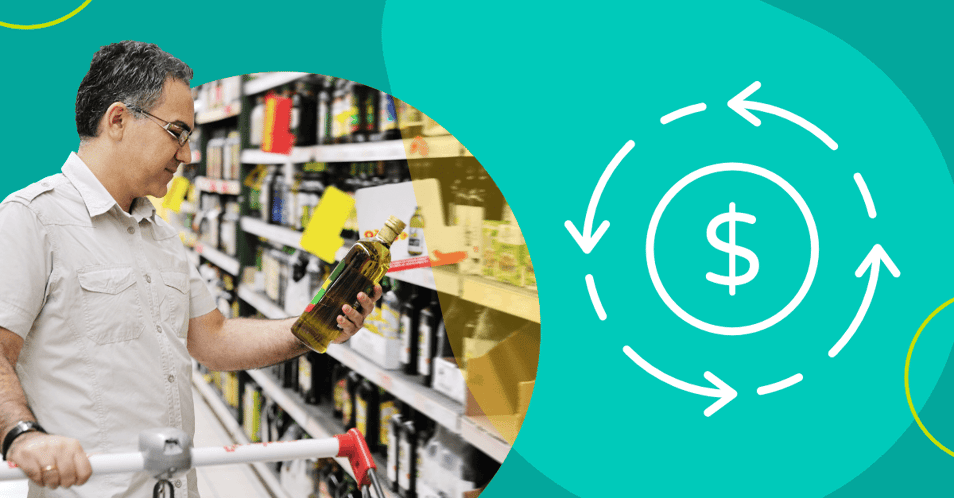
Private Label Product Lifecycle Management: Calculating ROI (Pt III)
|
PLM
|
Private label
|
Food industry
Posted By:
Don Low
Introduction
PLM solutions have been around for decades. Historically they have been considered as large investments, with long implementation projects caused by heavy customization, and slow return on investment.
This is no longer the case with many solutions being provided via software as a service, which reduces cost of ownership. Your selected vendor should also have an out-of-the-box offering which limits the level of configuration required to reduce implementation investments.
You will still need to prove that there is a return on investment. For this you need to assess your current product development and maintenance KPI’s so that you can present a financial case to your leadership and justify the purchase.
Before selecting a PLM vendor you need to review what cross functional departments the solution will support. In the case of Trace One the focus is the following:
1. Category and product development teams
2. Product quality and supplier compliance teams
3. Packaging and sustainability teams
In this blog series we will tackle four key areas of return and how these can be estimated. Let’s take a sample mid-sized retailer with an existing private brands portfolio of 3000 SKU and 300 suppliers. They want to expand their product range by 10% per year and recognize that spreadsheets and PDF documents won’t support the growth objectives.
Please note: the figures used are just examples and the formula would be adjusted based on an analysis of the retailer’s private brands business and their strategic objectives.
Reduce effort and cost when dealing with a recall situation
Product recalls, whatever the cause, are one of the biggest risks to a retailer’s private brand reputation and one of the most expensive to manage. A joint study by the Food Marketing Institute and Grocery Manufacturers Association estimated the average cost of a recall for food companies to be as much as $10 million in direct costs, plus brand damage and lost sales. This figure really applies to CPG brands rather than private brands, but the costs will still be significant.
The cost consists of time and effort to manage the crisis, cost of pulsing products off the shelf and product disposal, reformulation or repackaging the updated product, and lost sales revenue which can go way beyond the private brand portfolio. A recall can have a knock-on effect and impact overall store sales.
Having a solution that promotes the rapid identification of products impacted by the recall or ingredient issues will help to minimize the internal costs to manage the situation. Being transparent with your consumers will lessen the negative effects on your brand image which means less lost sales revenue.
Dealing with a Recall or Ingredient Issue
A. Total effort for 5 Quality Dept. FTE’s to investigate issue (ingredient, supplier and supply chain, SKU) = 35 days
B. Reasonable day rate for someone to be involved = $200
C. Number of issues per year = 5
D. Reduction in effort by using Trace One = 95%
A x B x C x D = $33,250 cost savings dealing with issues per year or ½ an FTE
Trace One’s PLM solution provides glossary-based formulation management that can search for ingredients within product specifications in seconds. It also provides supply chain transparency so if the ingredient issue is limited to specific suppliers or countries of origin the results can be filtered to provide a rapid worst case scenario.
That still leaves you liable for some costs. A PLM solution can’t reduce physical costs like product removal and disposal or help mitigate legal costs if someone gets sick. Ensuring that your suppliers comply with the required safety certification, being notified when audits are due and documentation is expiring, and regular product testing to agreed parameters is the best way to limit your exposure. Let’s take a very conservative example.
Recall Prevention
A. Physical costs (cost of disposal) = at least $100,000
B. Non-physical costs (legal fees) = at least $200,000
C. Average weekly sales of private brands (3,000 SKU x $2,500) = $7,500,000
D. Loss of sales over 1 week = 10%
E. Number of recalls = 2 per year
F. Reduction in issues by using Trace One = 50%
((C x D) + (A + B) x E) x F = $675,000 in cost saving and reduction in sales losses per year
There could also be some significant additional legal costs due to sickness which we can’t estimate.
What’s your current exposure to product recall risk?
Do you have siloed data that increases costs and effort to manage safety compliance and deal with an issue quickly?
Would you need to change suppliers quickly and would this impact product availability?
Supplier transitions will be covered in my final PLM return on investment blog next week.
Additional factors affecting return on investment
There are several factors that will affect how much of this potential return on investment a retailer will gain through use of a PLM solution. Commitment from the internal team to use the solution, and high levels of supplier adoption are required. Processes may well need to be changed to ensure the solution is being used to its strengths, otherwise data quality issues could creep in reducing the ability to quickly identify products and ingredients. A strong PLM solution provider with expertise in the private brands arena will be able to advise on these topics to ensure customer success.
About Trace One
We spearhead a powerful global retail community at the heart of the industry ecosystem. Unified on one platform, our systems connect, streamline, and organize data, teams, and networks. This allows brand owners to overcome complexity and grasp the opportunities at every stage of the product lifecycle.
